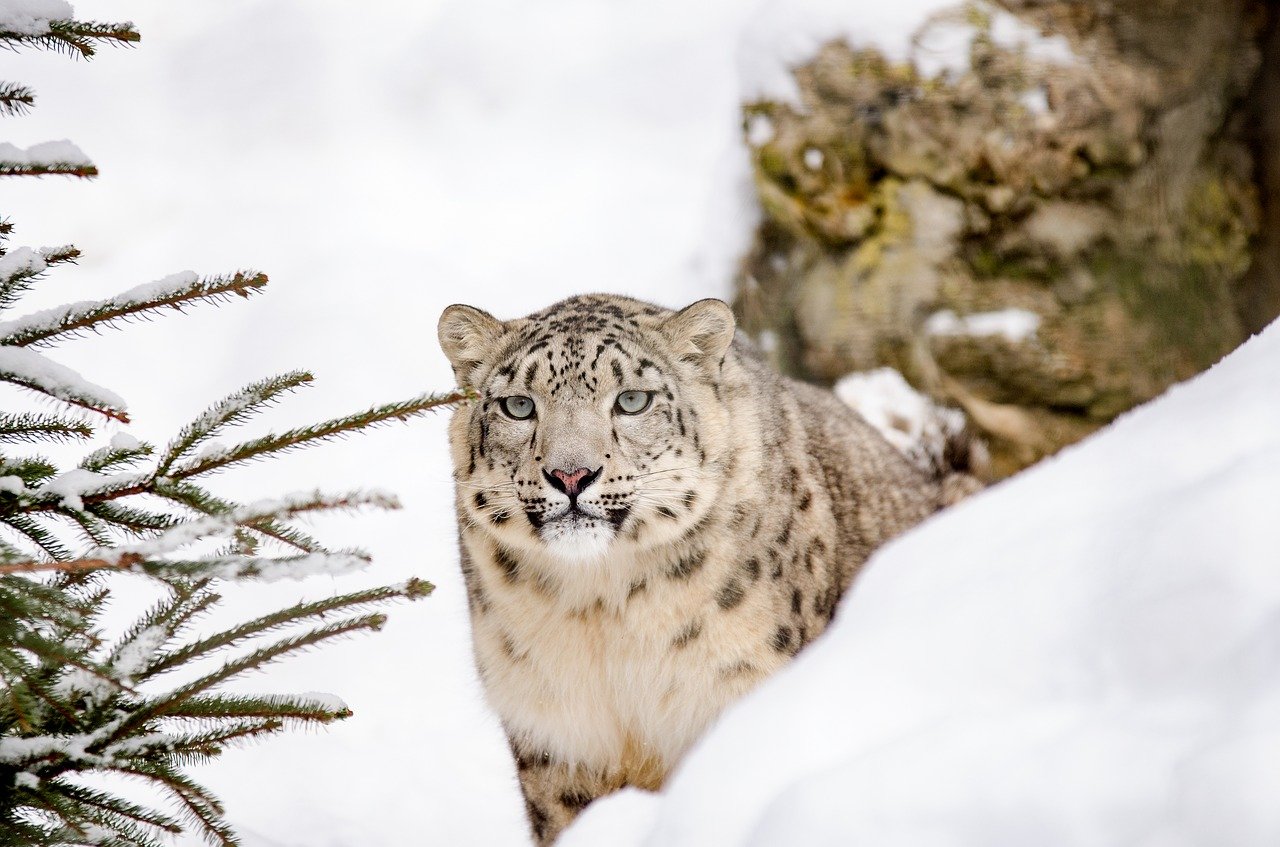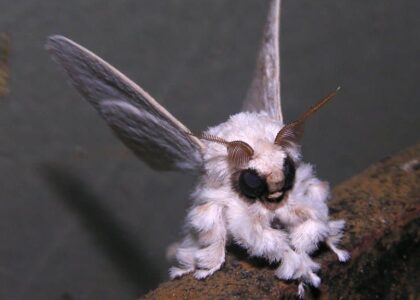Recently I came across a beautiful species found deep in the mountainous regions of the Himalayas. Rarely ever being seen, these creatures are known as the ghosts of the mountain or otherwise called snow leopards. The Himalayan region is tough terrain to survive and many fail to do so, but for these cats, their evolution has led them to gain abilities helping them thrive in the dead of winter with temperatures reaching as cold as -40 degrees celsius.
Firstly, these cats are truly massive, their height ranges from 55-65 cm (22-26 inches), length ranges from 90-115cm (36-44 inches), and their tail is around 100 cm (40 inches) making them reach a length of around 2 meters long. Though these animals play a crucial role in the ecosystem much is still unknown about their species as they are known to live in isolation and are challenging to find. When it comes to their ability to survive in the Himalayan regions however, there are 5 reasons they do so well in such a cold habitat.
1. Snow Shoed Paws
Have you ever tried walking in the snow with boots on and instantly fallen through? Well, even though these snow leopards weigh 27-54 kg they can keep themselves on the surface of a snow bank thanks to their massive paws. The enlarged size of the paws acts similar to snow shoes so they avoid falling through the snow when exploring.
2.Their Nasal Cavity and Lungs
The oxygen levels are low up in the mountains so having a wide and short nasal cavity with a specialized sinus enables them to warm the air before it reaches their lungs. This also combined with a large chest helps them breathe in such high altitudes.
3. Tiny Ears
Snow leopards have minuscule-sized ears compared to how large their body is, which you might think is just for points on looking adorable, but this feature also helps minimize heat escaping from their bodies.
4. Thick Fur
As most animals living in cold regions, these animals also have a very thick coat of fur. On their belly specifically, they have fur that can reach up to 3 inches long and this paired with a dense undercoat helps to trap heat and protect them from the cold.
5. Thick Tails
Going along with their thick fur they also have a very unique tail compared to other cats. This tail can reach a length as long as their body and is used for balance when venturing into steep slopes. When they’re not out hunting and exploring, however, their tails can act as blankets as they wrap themselves with to keep themselves warm.
These features are just ways snow leopards stay warm in their cold habitat though their ability to prey on anything that moves, use their hind legs to leap up to 45 feet in length, and their camouflaging fur is just some of the many other incredible features accorded to this animal.
Loss of Habitat
Even though they have adapted so well to their environments they still struggle to survive with the interference of human activity and climate change. Today there are only around 4000 snow leopards left in the wild and these numbers continue to drop. Poachers often engage in illegal hunting for their fur coats and due to cattle grazing and climate change, food is becoming more scarce leading to their decline in population. This is an issue because of how significant of a role they play in the ecosystem. Their role in the food chain is important as they are the top predator and have a large effect on the high-altitude habitats. With a decline in their population, countless species and local communities will be negatively affected.
As with any species distributing the ecosystem can cause lots of harm to surrounding areas which in turn can have larger consequences. Understanding the importance of organisms in our ecosystem and finding ways to care for our environment is important for our future and the future of this planet as well.
Sources:
Adaptation. Snow Leopard. (n.d.). Retrieved August 8, 2022, from http://bioweb.uwlax.edu/bio203/s2008/bishop_kayl/adaptation.htm#:~:text=Region%201%2D%20
Physical features. Snow Leopard Trust. (2017, May 9). Retrieved August 8, 2022, from https://snowleopard.org/snow-leopard-facts/physical-features/
Snow Leopard. WWF. (n.d.). Retrieved August 8, 2022, from https://wwf.panda.org/discover/knowledge_hub/endangered_species/snow_leopard/#:~:text=Their%20thick%20fur%20patterned%20with,protect%20them%20against%20the%20cold
Thomas, B. G. (2018, May 27). 10 incredible facts about the snow leopard. YouTube. Retrieved August 8, 2022, from https://www.youtube.com/watch?v=5drTptu0bgM World Wildlife Fund. (n.d.). Where do snow leopards live? and nine other snow leopard facts. WWF. Retrieved August 8, 2022, from https://www.worldwildlife.org/stories/where-do-snow-leopards-live-and-nine-other-snow-leopard-facts




